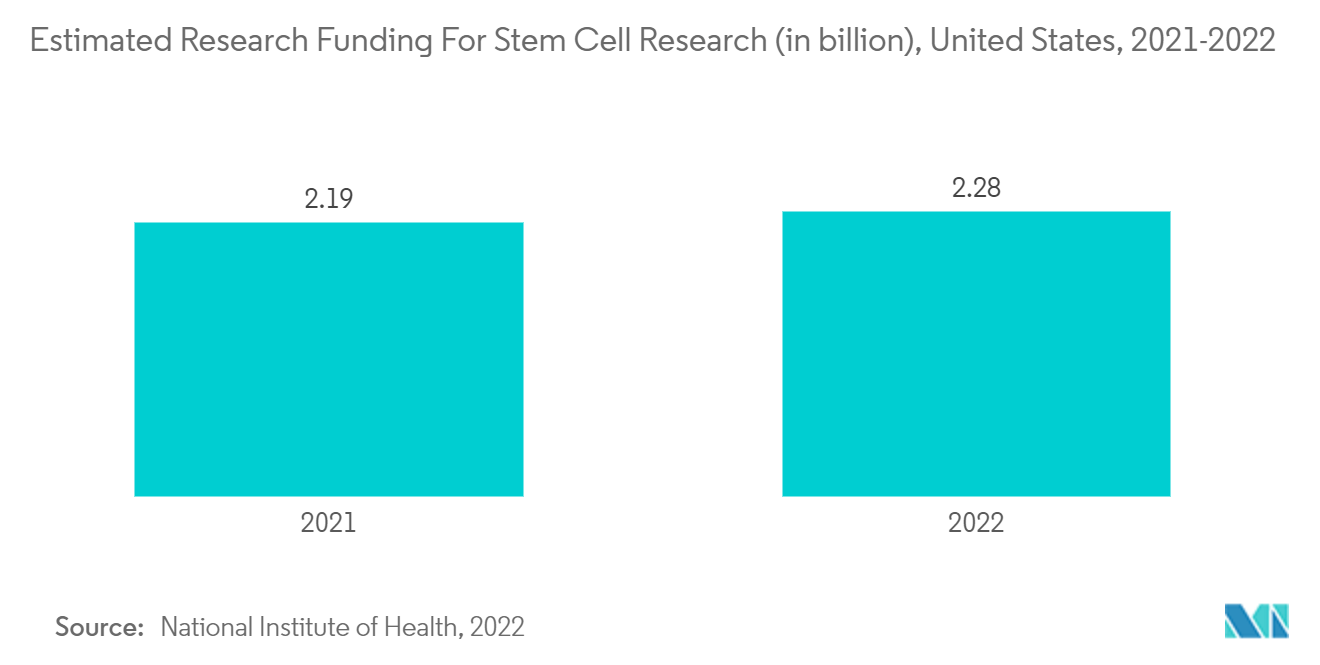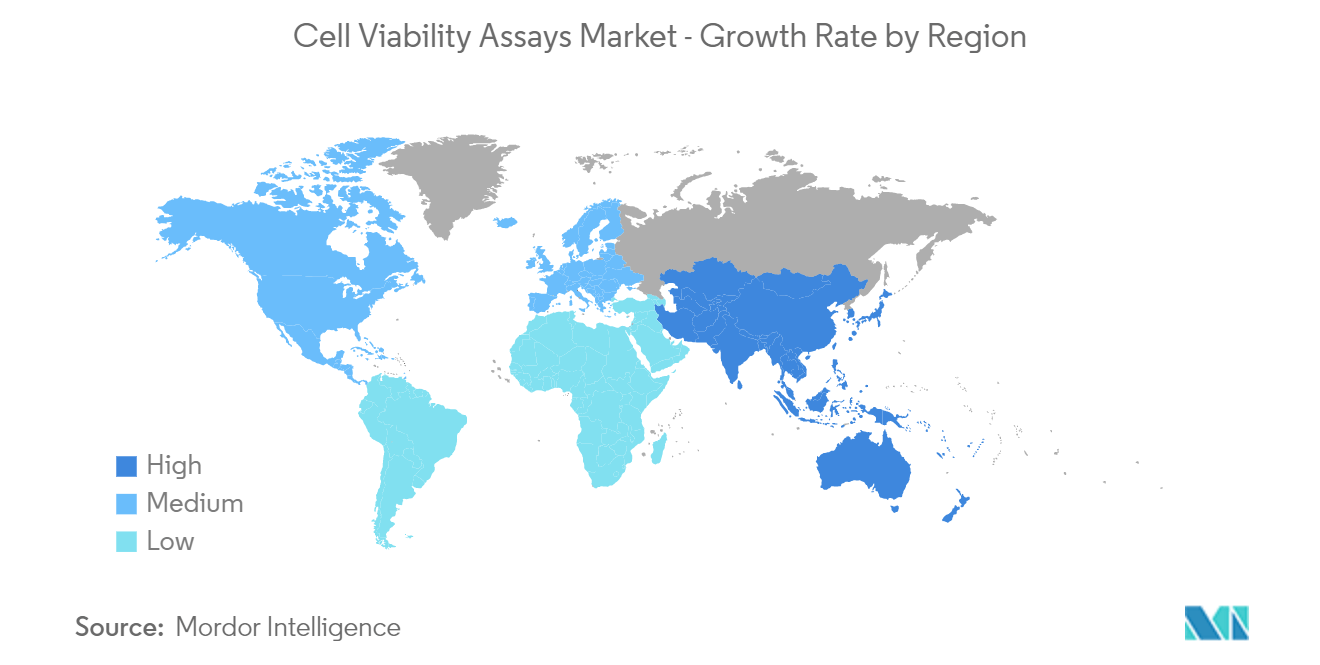Market Trends of Cell Viability Assays Industry
Stem Cell Research Segment is Estimated to Register A Significant Growth Over the Forecast Period
The stem cell research segment is estimated to register significant growth, owing to the rising R&D activities and funding from various organizations. For instance, in June 2021, the Morrison Government invested USD 180 million in ground-breaking medical research projects around Australia to improve the lives of Australians. The source also stated that the investment was funded through the government's USD 20 billion Medical Research Future Fund, and 106 medical research projects will receive funding to improve health outcomes, including for Australians with cancer, dementia, brain injuries, heart problems, neurofibromatosis, and many others. Thus, the increasing investments in medical research, including stem cell research, are expected to boost the growth of the studied segment.
Technological advancements will play a significant role in the future, with multiple experiments in pluripotent stem cells being the center for exciting growth. For instance, in April 2022, researchers at Osaka University developed a biomaterial using stem cells to reverse intervertebral disk (IVD) degeneration associated with back pain and certain spinal issues. The stem cells were induced into chondrocytes -- cells producing collagen that supports cartilage tissue. Implanting this biomaterial into a rat model of IVD degeneration brought the spinal mechanical properties back to control levels, and this type of innovation will likely fuel market growth in future years.
Companies are raising funds to develop stem cell-based therapies to tackle many diseases. For instance, in January 2022, Cellino Biotech, a cell therapy manufacturing company, raised a USD 80 million Series A financing round. Cellino plans to expand access to stem cell-based therapies to build the first autonomous human cell foundry in 2025. As the applications of stem cell technologies in the treatment of diseases have ultimately increased, the overall adoption rate of cell viability assays worldwide.
Thus, considering all the factors above, such as the rising R&D activities and funding from various organizations, the studied segment is expected to witness high growth over the forecast period.

North America is Expected to Hold a Significant Share in the Market and Expected to do Same in the Forecast Period
North America holds a significant share of the cell viability assays market and is expected to witness a similar trend over the forecast period without significant fluctuations. The region is dominating the market due to various factors like the increasing incidences of chronic diseases, rise in cancer cases, rise in government investment initiatives, and high-quality infrastructure for clinical and laboratory research.
The United States is expected to increase its market share in the future, owing to the increased adoption of cancer therapy and the growing burden of cancers in the United States. According to the data in the Cancer Facts & Figures 2022 data published by the American Cancer Society, there would be an estimated 1.9 million new cancer cases in the United States in 2022, out of which 89,010 were expected to be lymphoma and 60,650 cases were expected to be leukemia.
Furthermore, according to the National Institute of Health, in May 2022, the estimated research funding for cancer was USD 7,362 million in the United States in 2021, and it increased to USD 7,644 million in 2022. The high investments in cancer research are also expected to boost the market's future growth.
Moreover, in March 2022, Promega Corporation and FUJIFILM Cellular Dynamics, Inc. announced a strategic collaboration to advance novel assay development for drug discovery. Under a multi-year licensing agreement, FUJIFILM Cellular Dynamics will offer a wide range of custom differentiated iPSCs integrated with Promega biosensor and intracellular bioluminescent reporter capabilities for researchers and scientists to use as part of novel assay development in the drug discovery process.
Furthermore, in the United States, there is a rise in funding for cell-based research, which is also expected to propel the overall growth of the cell viability assay market over the forecast period.


